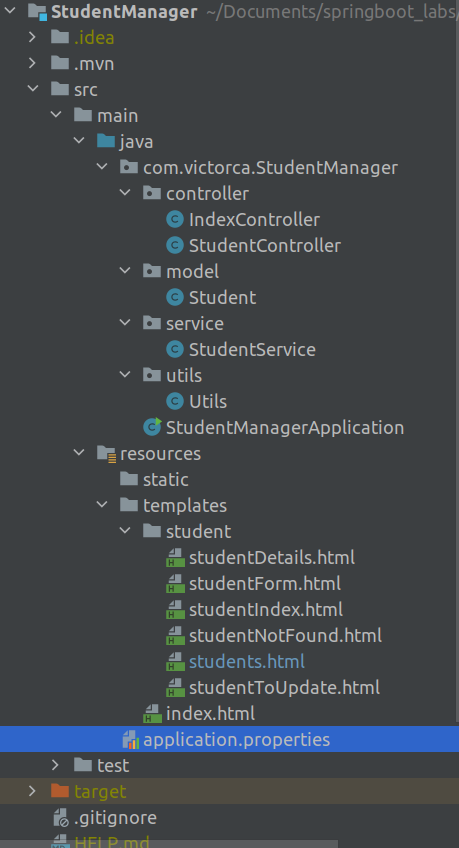UF02-1845-mongo
Subject
- Create a Spring API REST with all CRUD.
- Connect to a MONGO DB.
Model
Movie class and attributes. Lombok annotation has been used to create setters, getters and constructors. Document and Id annotation used to storage Data on DB.
Expand to reveal code
Movie.java
@Data
@NoArgsConstructor
@AllArgsConstructor
@Document(collection = "movies")
public class Movie {
@Id
private ObjectId id;
private String imdbId;
private String title;
private String releaseDate;
private String trailer;
private String poster;
private List<String> generes;
private List<String> backdrops;
@DocumentReference
// this annotation relationes review id and stores to the list.
private List<Review> reviewIds;
}Review class and attributes. Lombok annotation has been used to create setters, getters and constructors. Documentand id annotation used to storage Data on DB.
Expand to reveal code
Review.java
@Data
@AllArgsConstructor
@NoArgsConstructor
@Document(collection = "reviews")
public class Review {
@Id
private ObjectId id;
private String reviewBody;
public Review(String reviewBody) {
this.reviewBody = reviewBody;
}
}Service
Service class with all the busines logic needed for CRUD operations for both classes.
Expand to reveal code
MovieService.java
@Service
public class MovieService {
@Autowired
MovieRepository movieRepository;
public List<Movie> getAllMovies(){
return movieRepository.findAll();
}
public Optional<Movie> getMovieById(ObjectId id){
return movieRepository.findById(id);
}
public Optional<Movie> getMovieByImdbId(String imdbId){
return movieRepository.findMovieByImdbId(imdbId);
}
}
@Service
public class ReviewService {
@Autowired
ReviewRepository reviewRepository;
@Autowired
private MongoTemplate mongoTemplate;
//Review is created and performs the update operation on tue Movie object
public Review createReview(String reviewBody, String imdbId){
Review newReview = reviewRepository.insert(new Review(reviewBody));
mongoTemplate.update(Movie.class)
.matching(Criteria.where("imdbId").is(imdbId))
.apply(new Update().push("reviewIds").value(newReview)).first();
return newReview;
}
}Controller
Here is the controllers and all the end-points needed to perform CRUD operations for both classes.
Expand to reveal code
Controller.java
@RestController
@RequestMapping("/api/movies")
public class MovieController {
@Autowired
MovieService movieService;
@GetMapping
// returning a Response Entity with the 200 HTTP code as a return
public ResponseEntity<List<Movie>> allMovies(){
return new ResponseEntity<List<Movie>>(movieService.getAllMovies(), HttpStatus.OK);
}
@GetMapping("/{id}")
public ResponseEntity<Optional<Movie>> getMovieById(@PathVariable ObjectId id){
return new ResponseEntity<Optional<Movie>>(movieService.getMovieById(id), HttpStatus.OK);
}
@GetMapping("/imdbId/{imdbId}")
public ResponseEntity<Optional<Movie>> getMovieByImdbId(@PathVariable String imdbId){
return new ResponseEntity<Optional<Movie>>(movieService.getMovieByImdbId(imdbId), HttpStatus.OK);
}
}
@RestController
@RequestMapping("/api/reviews")
public class ReviewController {
@Autowired
ReviewService reviewService;
@PostMapping
public ResponseEntity<Review> createReview(@RequestBody Map<String, String> payload){
return new ResponseEntity<Review>(reviewService.createReview(payload.get("reviewBody"), payload.get("imdbId")), HttpStatus.CREATED);
}
}Tree folder project structure
Here’s the structure of the project. Note that there’s a Index Controller to manage the home page.

Repository
Source code here GitHub